
Mark Dennison
gamer level 3
708 xp
708 xp
followers
1
1
Use my invite URL to register (this will give me kudos)
https://boardgaming.com/register/?invited_by=darthofza
profile badges




recent achievements

Gamer - Level 3
Earn Gamer XP to level up!
Earn Gamer XP to level up!

Amateur Reviewer
Review 3 games and receive a total of 40 positive review ratings.
Review 3 games and receive a total of 40 positive review ratings.

Critic - Level 1
Earn Critic XP to level up by completing Critic Quests!
Earn Critic XP to level up by completing Critic Quests!

I'm Gettin' the Hang of It
Claim that you have played a game today by clicking the "Played Today!" button on a game page 10 times.
Claim that you have played a game today by clicking the "Played Today!" button on a game page 10 times.
Player Stats
Critic (lvl 1)
145 xp
145 xp
Explorer (lvl 1)
124 xp
124 xp
Professor (lvl 0)
96 xp
96 xp
Reporter (lvl 0)
70 xp
70 xp
About Me
Console gamer, board gamer, pc gamer, card gamer... pretty much everything by CCGs and WarGames. I enjoy games with great themes, and am not the biggest fan of complex games that takes more than an hour just to explain. The main reasons for this is because I like playing with a wide range of people, and complex games just take too long to get into properly when playing with different people all the time.

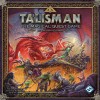





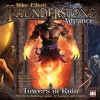

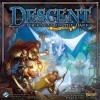


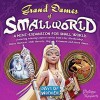
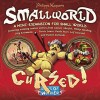


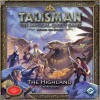

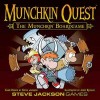
Munchkin Quest
Munchkins is a magnificent game. It has the perfect mix of comedy, strategy and luck all rolled into one, and one of the best gateway games out there. There are countless strategies to use based on the cards you get, and every game is followed by great laughs. Its also very rare in that once you have played the game a few hundred times and the jokes have got old (but are still funny), you still enjoy the game because of how great its mechanics are. But how does the boardgame version compare. Is Munchkin Quest a true spiritual successor or does it bring a different bag of tricks to the table?
MQ is a game for 2-4 people and can take anything from 1 – 4 hours to play. I would recommend you only play it with 4 players though, as many of the mechanics were designed with 4 players in mind, and you feel the lack of players with any number less.
If you are familiar with Munchkins, you will automatically feel at home with MQ. Not only does the game use the same items, monsters, races and classes from the card game, but it uses the same artwork for them as well. There are still the “Boots of Running Really Fast” and “The Shrieking Geek”. The effects of these cards have changed, however, in order to carry through the mechanics this boardgame requires, but the spirit of each one has been left in tact.
The board of MQ is built as you explore it. Every time you walk to the edge of the board, a new room tile is placed down at random. Every room is different and gives the player different tasks they can perform or inforces unique conditions on the room. Each room is also joined by a doorway tile at random which ranges from solid walls which you cannot normally pass to secret doors and open passageways. At any given time, there are many many different things going on, and the information can become quite hard to keep track of, especially when learning the game.
A typical turn in MQ has the player decideing where they want to go. When they enter into a room, they encounter whatever is there. If they reveal a new room, the room is created with a monster on it. Combat works largely the same way as it does in Munchkins. The player adds any bonuses to their level and if their level is higher than the monster’s level, they are winning. The big difference here is that monsters and players then roll a D6 dice and add the result to their combat level. If there is a small difference between you and the monster, the dice roll can change the result. You can’t play normal cards that buff the player or the monster after the roll, so the player has to see how much he is willing to risk on the roll of the dice. Certain cards and rooms can increase and decrease the amount of rolls you or the monsters make. If a monster isn’t killed it stays on the board.
Between each player’s turn, the monsters then move. A dice is rolled and the monsters follow arrows on the cards according to the colour that is rolled. This causes monsters to group up in the same rooms often, becoming a giant horde that the players will learn to fear! This creates the single most fun aspect of munchkins, and really reinforces the “Stab your Buddy” theme. Throwing your oppenents into Hordes is the easiest way to keep your opponents from gaining levels and ultimately winning.
On the subject of winning, players can move, on average, 3 times in a single turn. I’ve seen players get half way up to level 10 in single turns. The game would definitely move through at a faster rate than the normal Munchkins were it not for the many DXM cards you will collect throughout the game. These are the cards that Munchkins players would recognise as “Ancient” or “Mate”. You mess with the game and your oppenents, changing the results of combat and moving monsters around with DXM cards, and you never run out of them. The game hands you one at the start of each turn, whenever you reveal a room and whenever you kill one of your own monsters. This stops what some Munchkins players will recognise as the level 9 wait. You will start messing with players from the first turn, and you will never stop.
When you get to level 10, you have to return to the entrance tile, and fight a level 20 monster to win the game. Only once you defeat this monster can you declare that you are the winner!
So is MQ as good as Munchkins? It really depends on the type of gamer you are. There is simply way too much going on in this game for Casual gamers. It is definitely a lot more complicated than it needed to be, and I find that playign the game with casual gamers who love Munchkins can often turn out to be a nightmare simply because they struggle to keep up with all the rules. On the other hand though, if you and 3 friends can grasp complicated games quickly and get the hang of it, the game flows beautifully and is a lot of fun! This is most definitely not a gateway game, and should never be used as such. With a group of experience players, however, this is 2 hours of solid fun!
In short, get this game if you enjoy great depth to your games and love the humour of Munchkins. If you enjoy light-hearted games, or only play games very rarely as a means to socialise with friends, you might want to avoid this unless you’re willing to spend 4 hours glued to the rulebook.